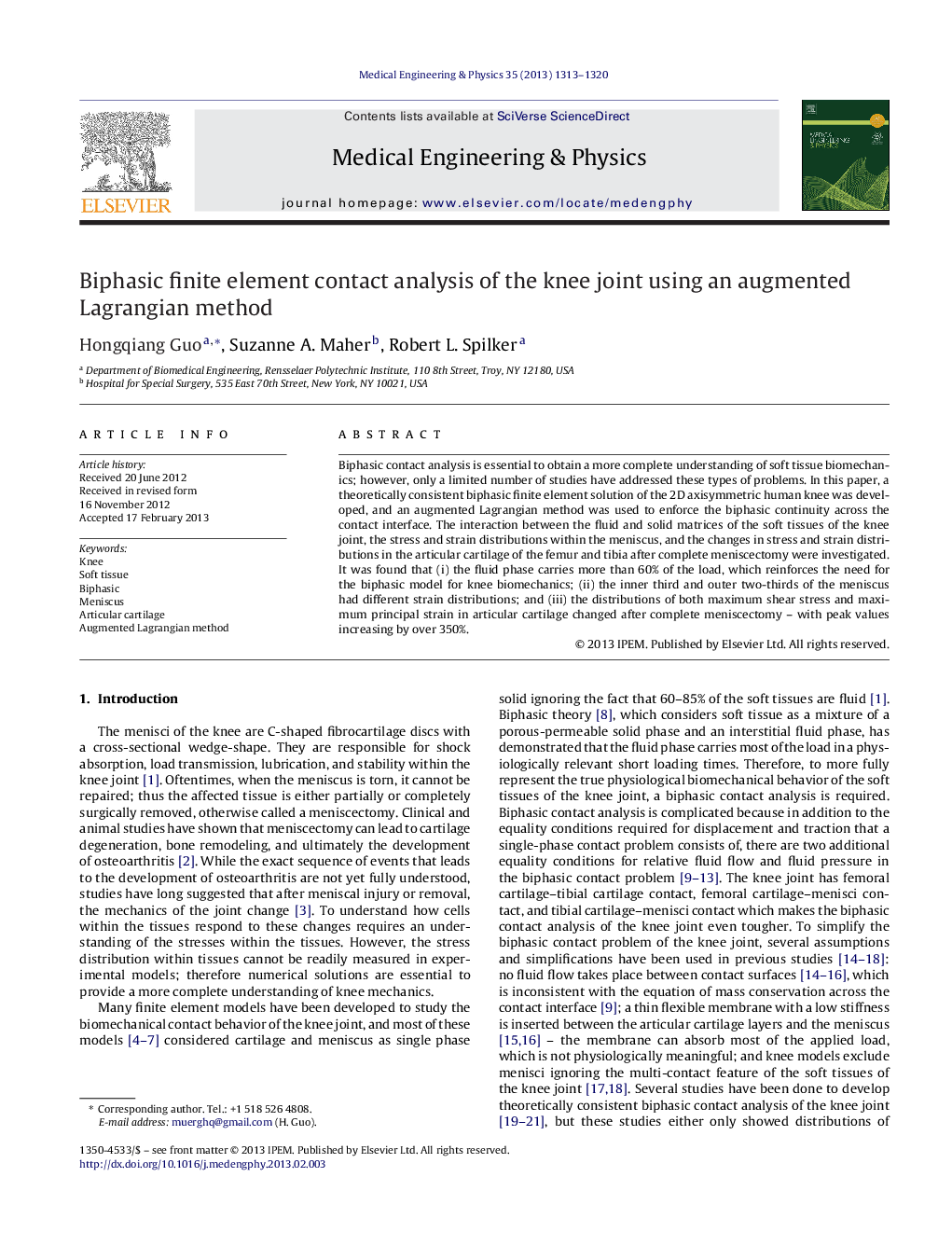| Article ID | Journal | Published Year | Pages | File Type |
|---|---|---|---|---|
| 876038 | Medical Engineering & Physics | 2013 | 8 Pages |
Biphasic contact analysis is essential to obtain a more complete understanding of soft tissue biomechanics; however, only a limited number of studies have addressed these types of problems. In this paper, a theoretically consistent biphasic finite element solution of the 2D axisymmetric human knee was developed, and an augmented Lagrangian method was used to enforce the biphasic continuity across the contact interface. The interaction between the fluid and solid matrices of the soft tissues of the knee joint, the stress and strain distributions within the meniscus, and the changes in stress and strain distributions in the articular cartilage of the femur and tibia after complete meniscectomy were investigated. It was found that (i) the fluid phase carries more than 60% of the load, which reinforces the need for the biphasic model for knee biomechanics; (ii) the inner third and outer two-thirds of the meniscus had different strain distributions; and (iii) the distributions of both maximum shear stress and maximum principal strain in articular cartilage changed after complete meniscectomy – with peak values increasing by over 350%.
